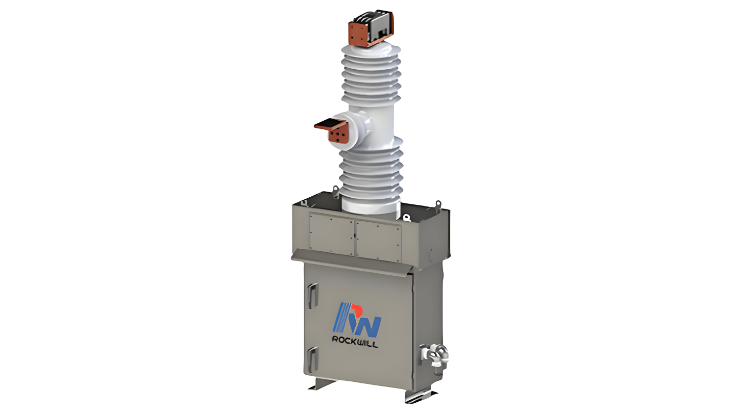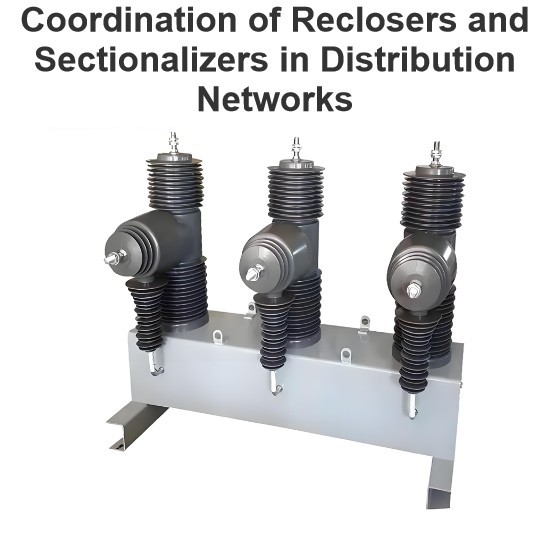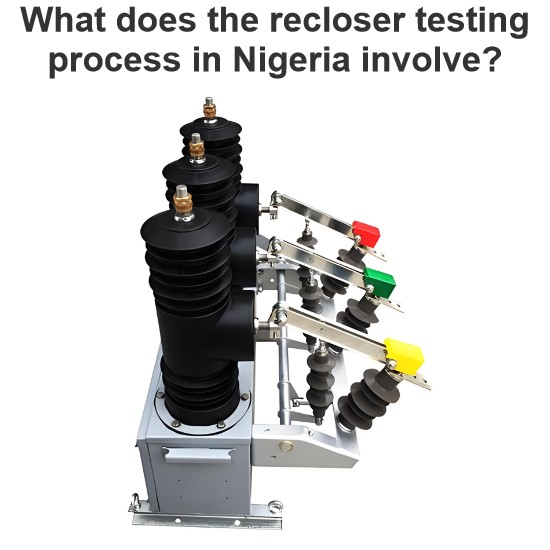1. Introduction
In power distribution infrastructure, reclosers play a pivotal role in ensuring reliable electricity supply—particularly in countries like Vietnam, where the demand for stable power has grown exponentially with economic development. As of 2024, Vietnam's power grid has formed a complex network, with a significant portion operating at the 20kV voltage level. In this context, reclosers serve as critical components to maintain grid integrity and enhance service quality.
2. Fundamental Understanding of Reclosers
A recloser is an advanced, self-contained high-voltage switching device designed to automatically detect fault currents in its main circuit. Upon detecting a fault, it interrupts the current based on definite-time or inverse-time protection characteristics, then attempts to reclose the circuit multiple times according to pre-programmed sequences after a set delay. For example, a recloser installed on a 20kV distribution line in Vietnam continuously monitors the current flowing through the line.
2.1 Key Functions of Reclosers
- Fault Detection and Isolation: Reclosers are equipped with sensitive current-sensing mechanisms. When a short-circuit or overcurrent fault occurs in a 20kV line (e.g., tree branches contacting conductors in rural Vietnam), the recloser quickly identifies abnormal currents, opens its contacts, and isolates the faulty section to prevent fault spread and widespread outages.
- Multiple Reclosing: One of the most distinctive features of reclosers is their ability to perform multiple reclosing operations. After opening to isolate a fault, the recloser waits for a preset time (e.g., several seconds) before attempting to close. This is based on the fact that many distribution network faults are transient (e.g., those caused by lightning strikes). In Vietnam, where thunderstorms are frequent—especially during the rainy season—a recloser on a 20kV line in Ho Chi Minh City might experience a lightning-induced fault, open to clear the fault, and then reclose. If the fault was transient, the line resumes normal operation; if persistent, the recloser continues reclosing per its preset sequence.
- Automatic Reset or Lockout: For transient faults, the recloser automatically resets to its initial state after reclosing restores power, ready to respond to future faults. For permanent faults, after completing the preset number of reclosing attempts (typically 3–4 times), the recloser locks out in the open position to ensure no continuous power supply to the faulty section. For example, if construction damages a cable in a 20kV line in Hanoi, the recloser will go through reclosing attempts, lock out once the fault is confirmed as permanent, and remain locked until manual repair.
3. Protection Functions of Reclosers
- Overcurrent Protection: Reclosers are set to detect overcurrent conditions in 20kV lines. When current exceeds a preset threshold (based on the line's normal load capacity), the recloser initiates protection actions. Overcurrent protection can be instantaneous for severe faults or time-delayed for less severe overcurrents. For instance, if a large industrial load in a 20kV-fed industrial park in Vietnam malfunctions and draws excessive current, the recloser detects the overcurrent and takes appropriate protective measures.
- Short-Circuit Protection: Short circuits are among the most severe faults in distribution systems, and reclosers excel in protecting against them. When a short circuit occurs, generating a massive current surge, the recloser's protection system is designed to quickly detect this high-magnitude current and interrupt the short-circuit current within milliseconds. In a 20kV urban distribution network in Vietnam, if a vehicle hits a power pole and damages conductors, causing a short circuit, the recloser rapidly isolates the fault to prevent further grid damage and ensure public safety.
- Ground-Fault Protection: Ground faults also pose significant risks to power systems and personnel safety. Reclosers can be configured to detect ground faults (when a phase conductor contacts the ground or a grounded object). In Vietnam's 20kV systems—especially rural overhead lines—ground faults may occur due to insulator failure or animals contacting the lines. The recloser's ground-fault protection detects the abnormal current path to ground and takes actions like opening the circuit to isolate the fault.

4. Types of Reclosers and Their Suitability in Vietnam
- Vacuum Reclosers: Using vacuum as the arc-quenching medium, vacuum reclosers are widely favored in Vietnam's 20kV systems for their long-term performance. The vacuum environment in the arc chamber provides excellent insulation and efficient arc quenching, making them suitable for both urban and rural 20kV lines. For example, in the expanding suburban areas of Da Nang, where new residential and commercial developments connect to the 20kV grid, vacuum reclosers are often installed due to their low maintenance requirements and high reliability.
- SF6 Reclosers: SF6 reclosers use sulfur hexafluoride (SF6) gas as the insulating and arc-quenching medium, offering excellent electrical insulation and arc-quenching properties. However, due to environmental concerns about SF6 emissions, their use in Vietnam is restricted, mainly applied in areas requiring high reliability and compactness—such as central business districts in Hanoi and Ho Chi Minh City, where installation space is limited.
5. IP67-Rated Reclosers in Vietnam's Harsh Environments
Vietnam's climate is diverse, with high humidity, heavy rainfall, and occasional typhoons in coastal areas. In such harsh conditions, IP67-rated reclosers are critical. The IP67 rating means the recloser is dust-tight and can withstand submersion in 1 meter of water for 30 minutes, making it ideal for outdoor installations in Vietnam's 20kV systems. For instance, in the flood-prone Mekong Delta, IP67-rated reclosers on 20kV poles can tolerate occasional flooding while operating reliably. Their robust construction protects internal components from moisture and dust, ensuring continuous distribution network operation.
6. IEC 62271-111 Reclosers in Vietnam
The IEC 62271-111 standard guides the design, operation, and testing of high-voltage AC reclosers. In Vietnam, adopting IEC 62271-111-compliant reclosers ensures that 20kV system equipment meets international quality and safety standards, with consistent performance in fault detection, interruption, and reclosing. Following this standard enables interoperability of reclosers from different manufacturers. For example, when upgrading the 20kV distribution network in Haiphong, using IEC 62271-111-compliant reclosers ensures seamless integration with existing infrastructure, enhancing overall power supply reliability and safety.
7. Conclusion
Reclosers are core components of Vietnam's 20kV distribution networks. Their functions—fault detection, isolation, multiple reclosing—and protection capabilities against overcurrent, short circuits, and ground faults are crucial for maintaining reliable power supply. Different types (vacuum, SF6), IP67-rated models, and IEC 62271-111-compliant reclosers all play roles in adapting to Vietnam's diverse geographic and environmental conditions. As Vietnam continues to develop its power infrastructure, the proper selection and deployment of reclosers remain key to ensuring stable and efficient power supply for its growing population and economy.















